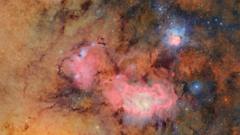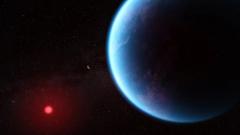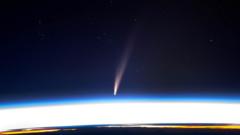In April, astronomers caused excitement in the scientific community by suggesting they may have found signs of life on K2-18b, an exoplanet located over 120 light-years from Earth. This initial claim attracted significant attention, but subsequent scrutiny by independent researchers has offered a starkly different conclusion. After thorough analyses, three separate studies have emerged, collectively casting doubt on the existence of life on K2-18b.
Luis Welbanks, an astronomer from Arizona State University and a co-author of one of the studies, stated, "The claim just absolutely vanishes." The contention surrounding K2-18b revolves around the complexities of observing distant planets, as confirmed visibility is largely determined by their distance from Earth and their capacity to reflect sunlight. While closer planets, such as Jupiter, can be observed with relative ease, K2-18b's distance makes detailed observation challenging, rendering it virtually invisible to traditional telescopes.
To overcome these challenges, astronomers have developed sophisticated techniques to gather information about exoplanets. By measuring star wobble and the gravitational pull of orbiting planets, they can infer vital information. This methodology can be traced back to 2010, when the planet GJ 1214b, located 48 light-years away, was studied as it passed in front of a star. The light from that star, filtered through the planet’s atmosphere, hinted at the presence of water vapor.
The breakthrough came in 2022 with the launch of the James Webb Space Telescope, which has allowed astronomers to examine distant celestial bodies in unprecedented detail. By detecting faint patterns in starlight, astronomers can infer details about exoplanet atmospheres, although interpreting these observations remains a formidable task that requires constant validation. The ongoing debate highlights not only the search for extraterrestrial life but the intricate nature of modern astronomical research.
Luis Welbanks, an astronomer from Arizona State University and a co-author of one of the studies, stated, "The claim just absolutely vanishes." The contention surrounding K2-18b revolves around the complexities of observing distant planets, as confirmed visibility is largely determined by their distance from Earth and their capacity to reflect sunlight. While closer planets, such as Jupiter, can be observed with relative ease, K2-18b's distance makes detailed observation challenging, rendering it virtually invisible to traditional telescopes.
To overcome these challenges, astronomers have developed sophisticated techniques to gather information about exoplanets. By measuring star wobble and the gravitational pull of orbiting planets, they can infer vital information. This methodology can be traced back to 2010, when the planet GJ 1214b, located 48 light-years away, was studied as it passed in front of a star. The light from that star, filtered through the planet’s atmosphere, hinted at the presence of water vapor.
The breakthrough came in 2022 with the launch of the James Webb Space Telescope, which has allowed astronomers to examine distant celestial bodies in unprecedented detail. By detecting faint patterns in starlight, astronomers can infer details about exoplanet atmospheres, although interpreting these observations remains a formidable task that requires constant validation. The ongoing debate highlights not only the search for extraterrestrial life but the intricate nature of modern astronomical research.























